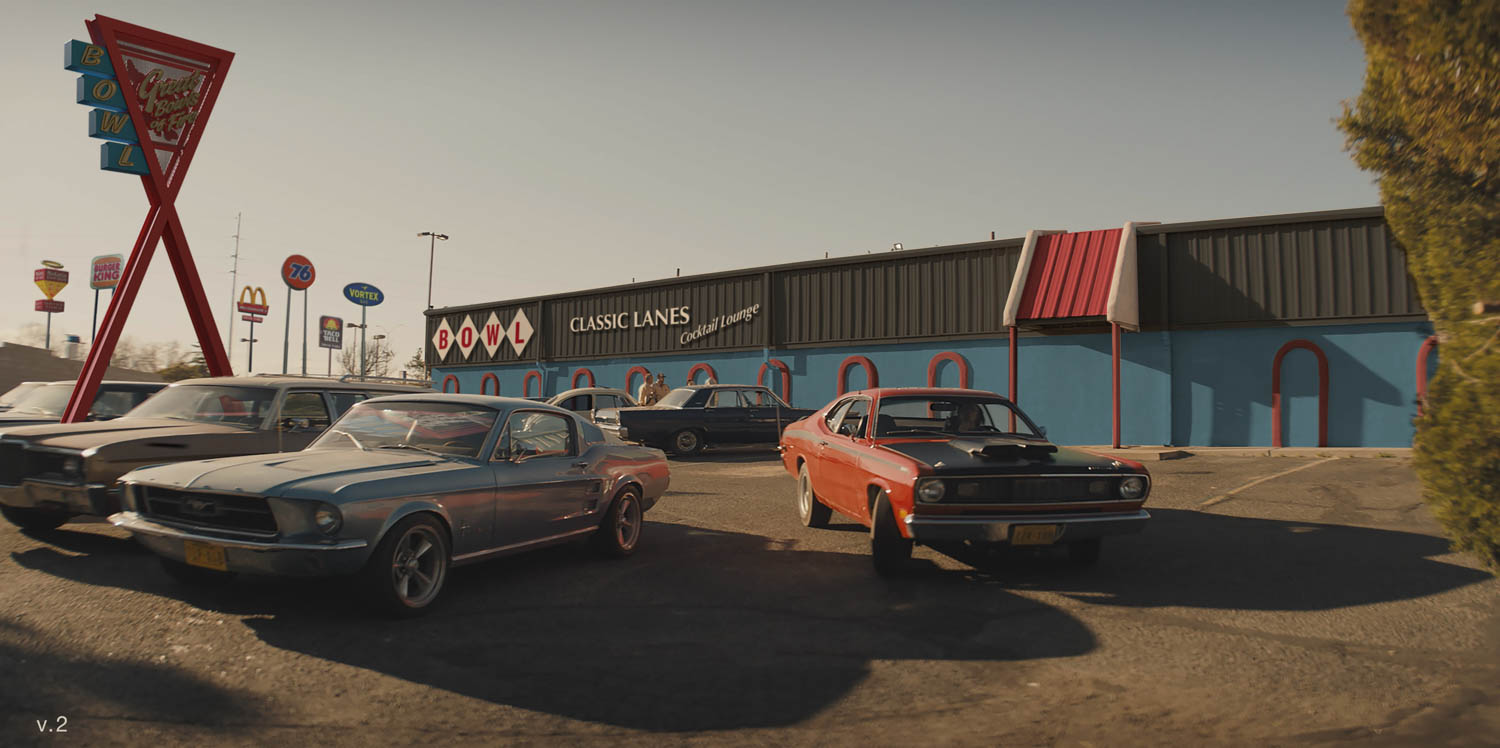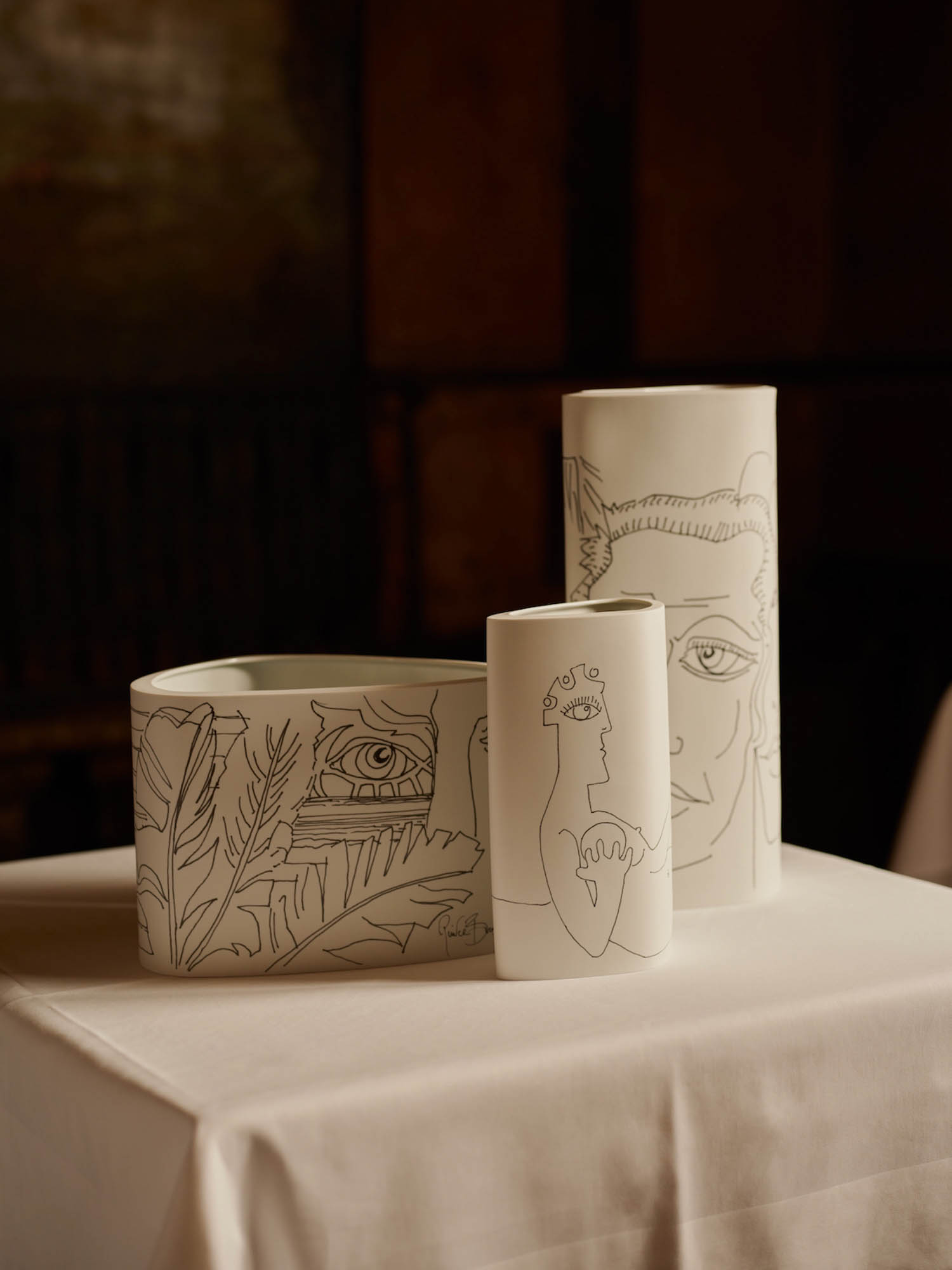PS: Glamour Puss

For the past four years, when Interior Design’s April fashion and retail issue rolls around, I start to remember the good times I had (which were not 10, and probably under five) filling the shiny shoes of a high-end New York garmento. It was the late ’70’s, and I was Moss of Moss Shamask, Ltd., with a way-ahead-of-its-time, perfectly all-white loft atelier at 860 Madison Avenue. Chic as all hell. No product in the windows. Instead, at the entrance, there was a Jean Dunand lacquered Amphora vase—bigger than the one Yves Saint Laurent owned. Upstairs, set amidst the immaculate, plainer-than-Pawson showroom, my 1925 Josef Hoffmann sterling-silver tea service perched nonchalantly on a 5-inch-thick limestone slab. “Oh, excuse me. Lily Auchincloss is at the door. . .”
Having come into some family money, and with founding a fashion house sounding like a rather nice step up from the nutty characters I’d been playing in arte povera avant-garde plays (barefoot, yet), I took on this well-shod role when both my age and my waist measurement were the same number: 28.
The Shamask was Ronaldus Shamask, designer extraordinaire of the collection. I was introduced to him by a mutual friend, an influential art dealer who told me: “Start a women’s fashion company and produce the work of Shamask, he’s brilliant.” So I met Ron, looked at some drawings, and you know what? He was brilliant!
The first order of business, of course, was for us to embark upon a trippy trip to Paris. The agenda driving the trip, at least for me, was to acquaint ourselves, first-hand, with whom we believed our client would be. We needed empathy, we needed inside information concerning lifestyle, so we would know which weight of fine Bellora linen to use for which hour of the day. We went to Paris to be at Fashion Court: rooms at the Ritz, drinks at Bar Hemingway, dinner with Gianfranco Ferré and Eleanor Lambert. At one point, we even ran into Manolo, there for the same reasons as us. None of us talked to each other. All our attention was on cruising whatever place we were in order to spot someone whose look, whose mannerism, whose pocket square we could appropriate and, with a slight adjustment, make our own. We were all looking for the perfect answer to Creative Black Tie, the dress code all invitations of that period specified.
I wore skinny, vintage, striped raw silk vests and loud, but fun Emilio Pucci ties. Those ties, many of which I still have, gave me an edge, a signature, my personal brand, which, I had learned from the Paris trip, was critical. I soon held my own at the bar at the Villa d’Este, a five-star hotel along Italy’s Lago di Como, during the twice-annual Première Vision fabric show there. We, however, would stay in Milan, at the Hotel Principe di Savoia. Early each morning (not really that early), we would be driven to Como in a van. We did this so that our muse—a beautiful, tall, and skinny Southern society belle of a certain age—could remain standing, strap-hanging like on the subway, for what felt like an eternity. This enabled her to accompany us from booth to booth at the fabric show wearing Ron’s 2-Point dress, in that Bellora linen, without it displaying a single wrinkle.
Then it was back to New York for our first season, our first runway show. It was a spectacle, with acres of white flowers from Madderlake, the Cartier of flora at that time. We showed our spring 1979 women’s collection, all the pieces in only black, white, and a bit of red linen, in five different weights. Afterward, limousines waited below, lined up on Madison as perfectly as the black makeup pencil accenting the eyelid of model goddess of the moment, Apollonia van Ravenstein. We were driven an hour to Augustin Paege’s Box Tree restaurant in Purdys, New York—a sort of Rambouilletlike fantasy-country foil to his Versailles-esque establishment in Manhattan—really, the only eatery where we weary, fabulous, and truly sensorially privileged persons could be offered for supper what a French Queen allegedly once dubbed cake, not bread.
The next day, the New York Times review, written, by the way, by Bill Cunningham, refers to our collection as a “special raiment for the ceremonial private life.”
We had arrived. I was broke in a year, but we’d always have Paris.
The next 11 years: blood, sweat, sweat shops, tears. Hard, hard, hard, work. Really hard work. Nothing is as difficult as being a small-fry operation with a big star’s reputation. You must somehow meet expectations but on a shoestring budget, which means creativity is not a luxury but a lifeboat.
For me, Karl Lagerfeld’s response to the tremendous and oh so well-deserved praise he received for his re-launch of the Chanel collection summed up the whole megillah: “I can tell you all kinds of moral tales, but fashion and reality are vaguely different.” Shall we just leave it at that?
Follow Murray Moss on Instagram: @murray_moss


